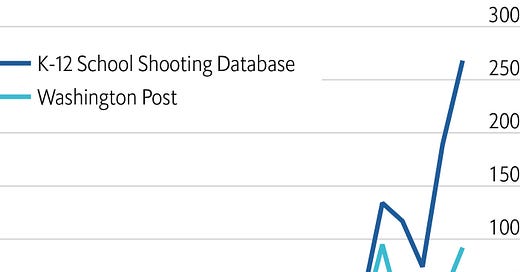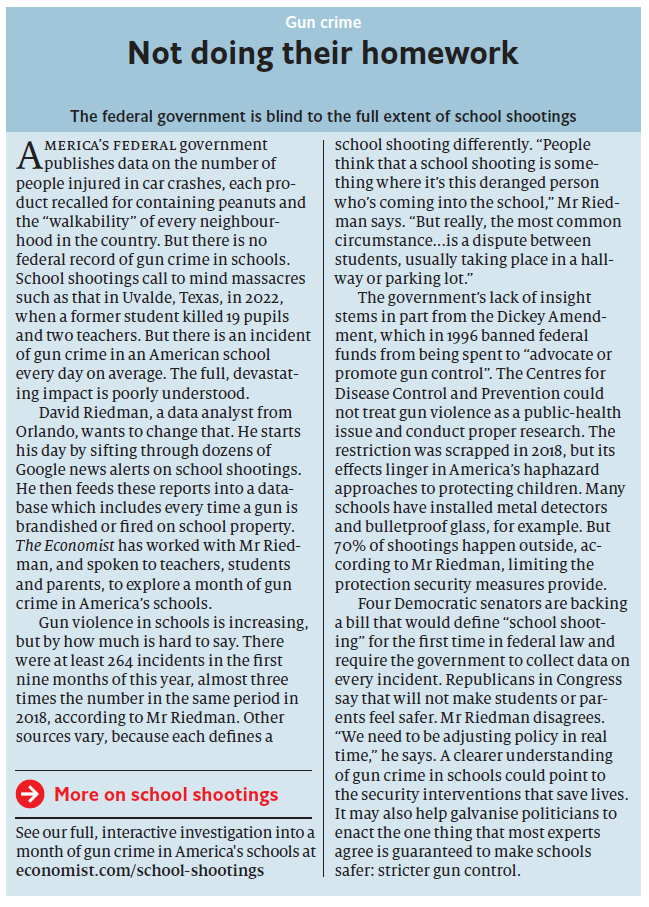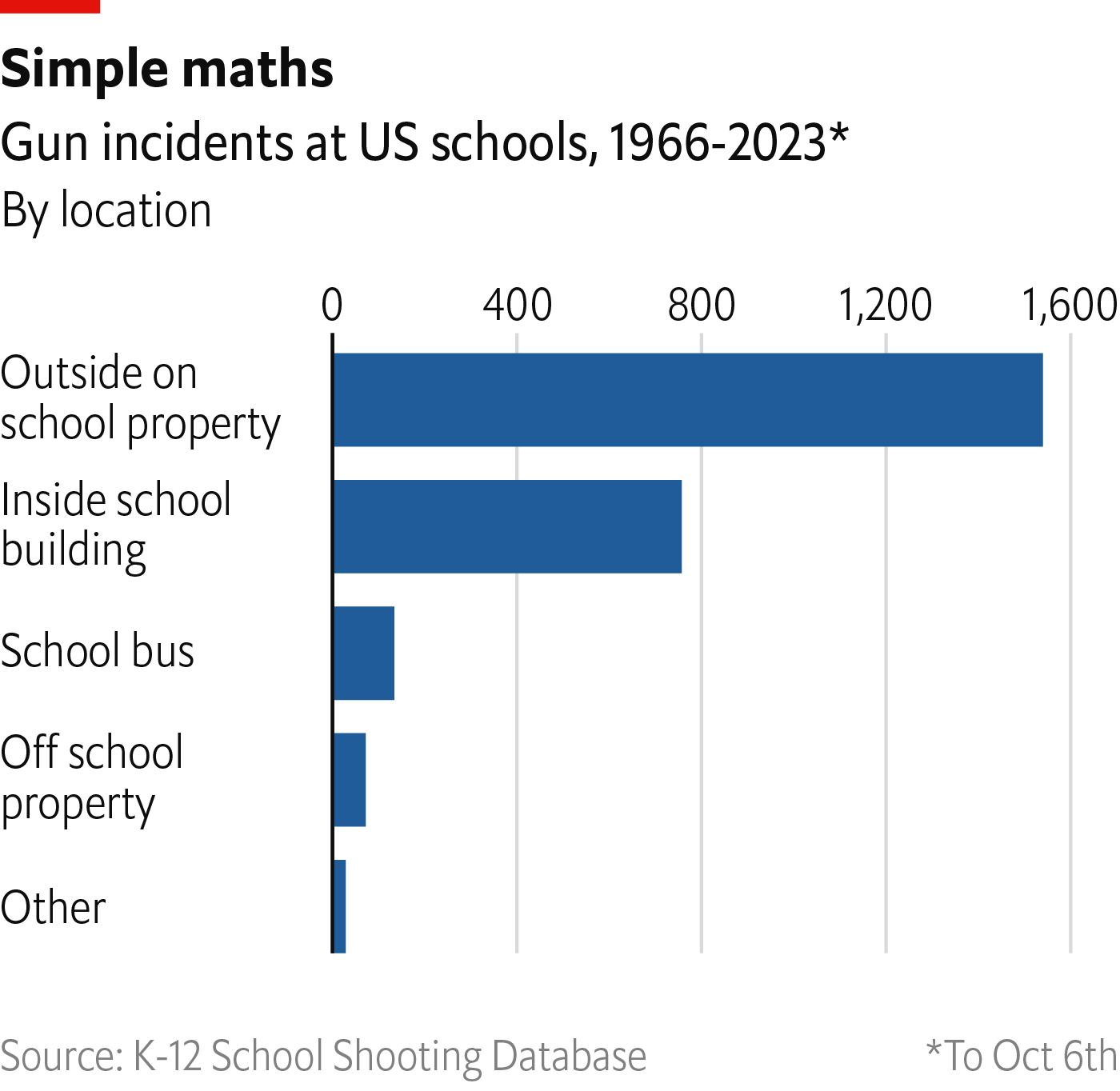US Government is 'not doing their homework' on gun violence at schools
Part II of The Economist's coverage of the K-12 School Shooting Database and the implications when our government fails to collect this information
Winston Churchill famously said “the British nation is unique in this respect: they are the only people who like to be told how bad things are.” Across the pond, the United States government has taken the opposite approach with citizens who prefer to pretend that problems don’t exist to avoid getting bad news.
Luckily we have the Brits at The Economist to point out just how bad it really is when “America’s federal government publishes data on the ‘walkability’ of every neighborhood in the country but there is no federal record of gun crime in schools”.
The Economist’s content this week came from an 11-month project with the K-12 School Shooting Database and was targeted to all audiences with:
interactive digital story
mini youtube/instagram documentaries on how the data is collected, swatting, and lockdowns
feature in the weekly 'Off the Charts' data journalism newsletter
old fashioned print article (below)
It's absolutely barmy how the British media will shine a bigger spotlight on this issue than their American counterparts whose children live these experiences every day. Over the last 5 years, I’ve worked on dozens of projects with journalists ranging from The New York Times’ half century of school shootings feature to a local St. Louis TV station’s documentary a year after the CVPA shooting.
None of the American journalists I worked with were putting together a carefully planned, multi-modal collection of content to target every audience possible.
Getting under the hood of the data
From The Economist Off the Charts newsletter for the best of our data journalism:
Two of the most rigorous databases are the Washington Post’s school-shooting dataset and the K-12 School Shooting Database, compiled by David Riedman, a researcher. The Washington Post’s dataset tracks when a gun is fired during the school day, on school property. Mr Riedman’s data are much broader: he counts each time a gun is brandished or fired on school property—and the pavements and roads surrounding it—and each time a bullet hits school property, at any time. The disparity in the numbers is astonishing.
For our films and interactive article, we interviewed Mr Riedman, who since February 2018 has spent several hours a day building his database. He starts the day by sifting through dozens of Google alerts for different terms: “school shooting”; “shot at school”; “shots fired”; the list goes on. He checks all of them and adds them to his database.
Datasets such as Mr Riedman’s cannot be flawless. They are often compiled by scraping the internet for news reports or reaching out to police departments for information. Inevitably, some incidents may be missed. But some data is better than no data.
During our reporting, we discovered how important it is to capture shootings that take place outside school buildings and school hours. According to Mr Riedman’s data, the majority of school shootings happen in school parking lots or in front of schools. We filmed at a school in Brooklyn, for example, where two teenagers and a security guard were shot and injured as they left school. Because the shooting took place outside and after lessons had ended, this incident would not be recorded in most datasets. But it had a profound impact on pupils.
A federal database could provide a better picture of the extent of this violence and its dire consequences. Mr Riedman’s work is a starting point. His data have supported policy briefings and academic research, and been quoted by President Joe Biden.
Summing it up
This quote from The Economist says it all “Mr Riedman is just one man, with a lot of Google alerts.”
David Riedman is the creator of the K-12 School Shooting Database. Listen to my recent interviews on Freakonomics Radio and the New England Journal of Medicine.






